How DeepSeek is redefining the future of AI
DeepSeek’s meteoric rise was fuelled by its groundbreaking AI capabilities and disruptive efficiency. It achieved these results with just 2,048 Nvidia GPUs, a fraction of the resources OpenAI required.
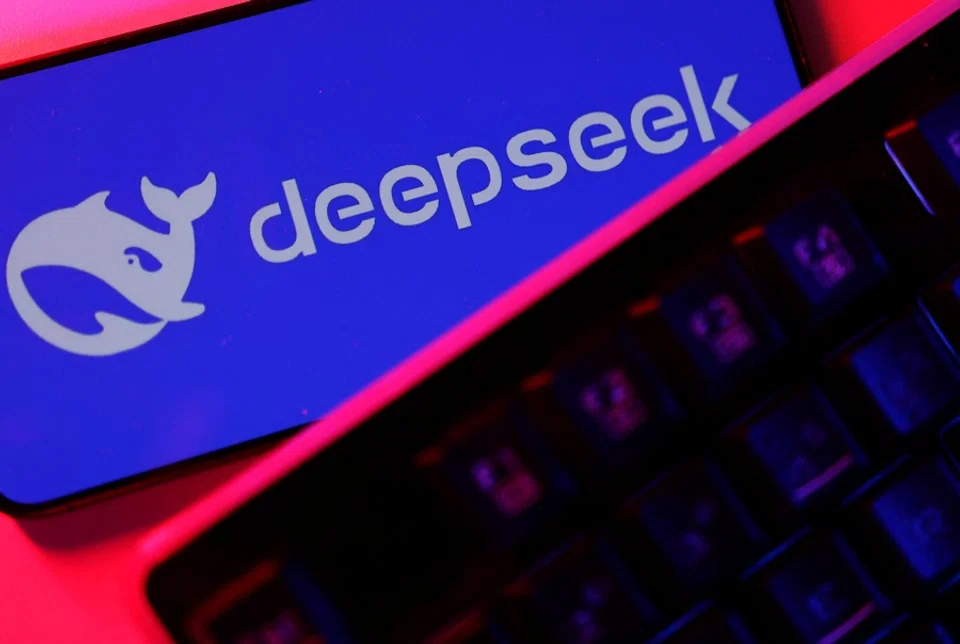
(By Caixin journalists Liu Peilin, Qu Yunxu and Denise Jia)
DeepSeek, a Chinese artificial intelligence (AI) startup, has sent shockwaves through the global tech industry, triggering a massive sell-off in chip stocks and igniting political tensions in Washington. DeepSeek’s stunning efficiency — achieving OpenAI-tier performance with a fraction of the compute power — has Silicon Valley on edge. As its app rockets to No. 1 on the Apple and Google app stores, Wall Street and Washington scramble to respond, marking what could be the biggest challenge yet to America’s AI supremacy.
Developers were stunned by DeepSeek’s technical report, which shows capabilities on par with OpenAI’s leading models through highly efficient algorithms.
Backed by Hangzhou-based private equity firm High-Flyer, DeepSeek released its new-generation open-source AI model, DeepSeek-V3, on 26 December, followed by a consumer-facing app and its advanced reasoning model, R1, in January. These models directly rival OpenAI’s most sophisticated AI systems but require far fewer resources.
Developers were stunned by DeepSeek’s technical report, which shows capabilities on par with OpenAI’s leading models through highly efficient algorithms. Ordinary users flocked to the platform — while OpenAI’s latest ChatGPT model costs US$20 per month, DeepSeek is free.
DeepSeek’s meteoric rise was fuelled by its groundbreaking AI capabilities and disruptive efficiency. DeepSeek achieves these results with just 2,048 Nvidia GPUs, a fraction of the resources OpenAI required. DeepSeek reported a total training cost of US$5.58 million and consumed less than 3 million GPU hours, compared with over 30 million GPU hours by Meta’s Llama-3.1-405B.
The shockwaves from DeepSeek’s emergence erupted across Wall Street. On 27 January, Nvidia shares plunged nearly 17%, wiping out US$589 billion in market value — the biggest single-day loss in history for a publicly traded company. Other chipmakers, including TSMC, Micron, Broadcom, ARM and ASML, also plummeted as investors questioned whether AI’s insatiable demand for high-end chips might slow.
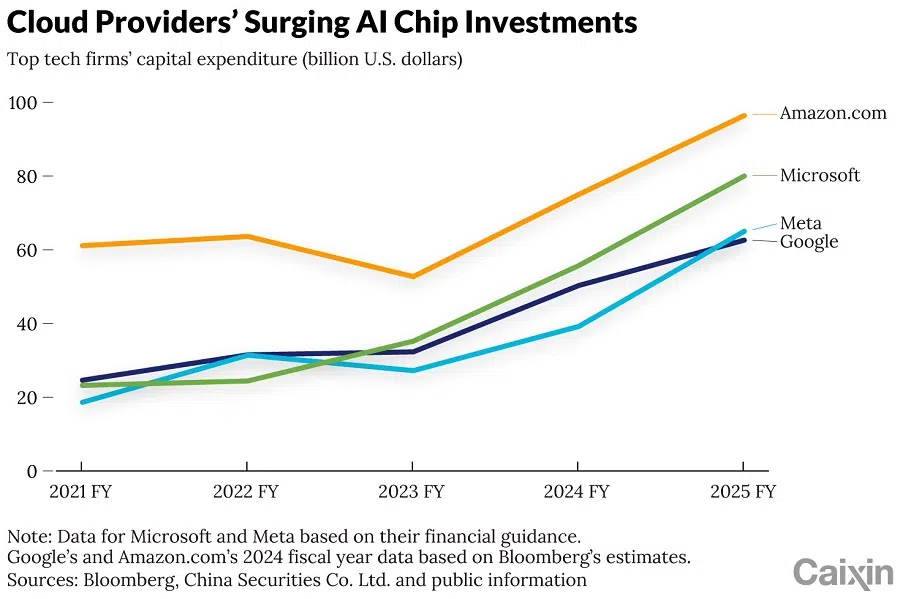
The impact extended beyond financial markets, drawing attention from global AI leaders. At the World Economic Forum in Davos, Switzerland, Microsoft CEO Satya Nadella urged policymakers to take China’s AI advancements seriously. AI pioneer Andrej Karpathy praised DeepSeek’s ability to match OpenAI and Meta’s models with a fraction of the compute power, calling it an impressive display of engineering efficiency.
In Washington, DeepSeek’s rise sparked immediate concern. Bipartisan lawmakers called for stricter AI export controls, warning that China’s rapid progress could erode US technological dominance.
Accusations soon emerged in the American tech community, with some alleging that DeepSeek had used OpenAI’s models for training. Industry experts dismissed these claims, pointing out that AI models are typically trained on vast pools of publicly available data. Others noted that restricting API access to advanced models would do little to prevent their outputs from being used in further training.
While the AI industry in China was dominated by internet giants and well-funded startups, DeepSeek remained an outlier. It neither sought external investment nor aggressively expanded its computing power, maintaining a quiet presence even as AI became the country’s most competitive sector.
High-Flyer’s quiet empire
High-Flyer, the parent company of DeepSeek, has long operated in the shadows. Founded in 2015 by Liang Wenfeng, a Zhejiang University graduate with expertise in machine vision and financial modelling, the firm pioneered AI-driven quantitative trading in China. By 2021, it managed nearly US$14 billion in assets, far ahead of its competitors in AI adoption.
While most Chinese AI firms scrambled for GPUs after ChatGPT’s launch, High-Flyer had been quietly stockpiling thousands of Nvidia chips since 2019. In 2023, it spun off its AI division to from DeepSeek, focusing exclusively on open-source large language models (LLMs). While the AI industry in China was dominated by internet giants and well-funded startups, DeepSeek remained an outlier. It neither sought external investment nor aggressively expanded its computing power, maintaining a quiet presence even as AI became the country’s most competitive sector.
In January 2024, DeepSeek launched China’s first open-source Mixture-of-Experts (MoE) model, a system that routes tasks to specialised smaller models for greater efficiency. However, DeepSeek’s first model barely made a dent in the market.
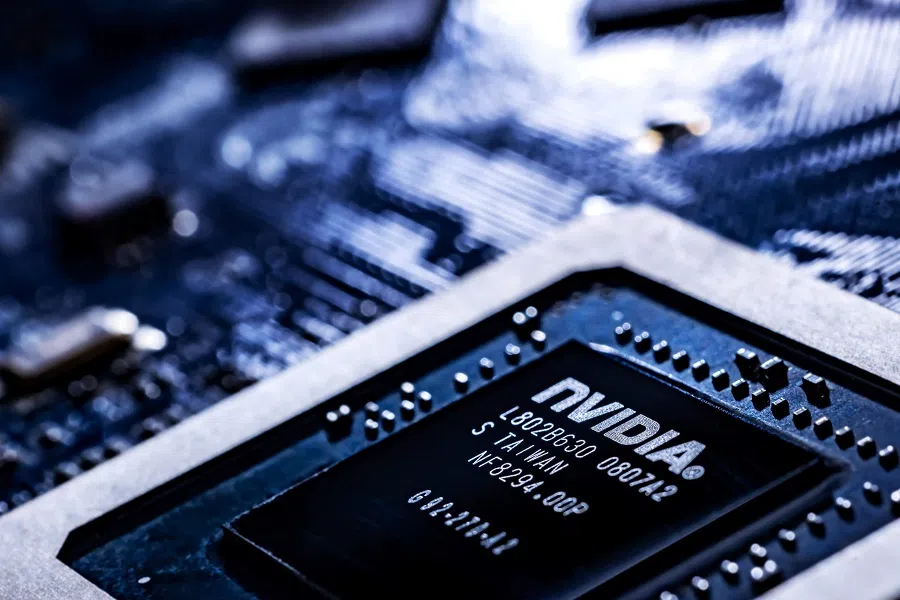
That changed last May with the release of DeepSeek-V2, which refined the MoE framework and drastically improved inference efficiency. The model triggered an AI price war in China, slashing inference costs to 1% of OpenAI’s rates, forcing companies like ByteDance and Alibaba Cloud to cut their prices. The unprecedented transparency of DeepSeek-V2’s research paper also won widespread respect in the AI community.
By 2023, High-Flyer had solidified its status as one of China’s top four quantitative firms, managing more than 60 billion RMB (US$8.21 billion) in assets, providing ample resources to fund its AI ambitions. Despite mixed fund performances, the firm’s deep investment in AI set it apart from traditional quantitative trading funds.
While many viewed DeepSeek as an extension of High-Flyer’s financial operations, its trajectory suggests something far more transformative — an AI company born from finance but now challenging the industry’s most dominant players.
The unexpected rise of DeepSeek has set off a chain reaction across the global AI industry, sending cloud service providers, chip manufacturers and tech giants into a frenzy.
The chain reaction
The unexpected rise of DeepSeek has set off a chain reaction across the global AI industry, sending cloud service providers, chip manufacturers and tech giants into a frenzy.
Beijing-based AI infrastructure startup SiliconFlow provides inference deployment services for open-source AI models. Its founder, Yuan Jinhui, told Caixin that when DeepSeek released its second-generation open-source model, V2, in May 2024, SiliconFlow was quick to roll out an inference service that outperformed DeepSeek’s official inference platform, gaining strong traction in the AI community.
Yet, Yuan had not anticipated DeepSeek’s meteoric rise. Before DeepSeek launched V3 in late 2024, Liang advised Yuan to prepare AI servers for the new model’s rollout, but Yuan hesitated due to high rental costs. By the time DeepSeek-R1 went viral globally last month, he found himself working around the clock to roll out support, missing a key early-mover advantage. “Not deploying DeepSeek-based services earlier was a major miscalculation,” he told Caixin.
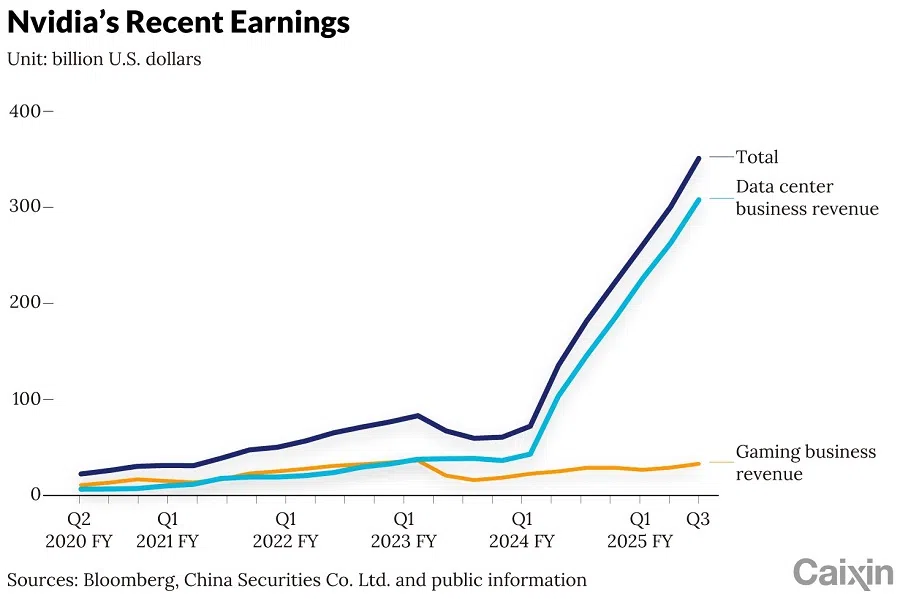
One major reason for the delay was V3’s massive 671 billion parameters, requiring at least 80 H100 servers, with monthly rental costs ranging between 5 million and 6 million RMB. To manage expenses, Yuan shifted from Nvidia’s hardware to Huawei Technologies Co. Ltd.’s Ascend AI chips, which were more affordable and widely available for lease in China. But when DeepSeek-R1 traffic surged unexpectedly on Chinese New Year’s Eve, SiliconFlow and Huawei scrambled to handle the demand, ultimately launching full inference support by 1 February.
International cloud providers were the first to react. Microsoft, despite its close partnership with OpenAI, announced on 29 January that it had integrated DeepSeek-R1 into its AI catalogue, optimising it for on-device AI assistants. Amazon Web Services followed the next day, while Google Cloud discreetly published a deployment guide for DeepSeek-R1.
The chip industry moved swiftly to capitalise on the momentum. On 29 January, AMD promoted DeepSeek on its AI platforms, while Nvidia added DeepSeek-V3 to its NIM AI deployment tool, touting enhanced efficiency for developers.
The speed at which DeepSeek-R1 gained traction overseas caught even China’s tech industry by surprise. The launch coincided with Lunar New Year, forcing Chinese cloud providers to work through the holiday to deploy DeepSeek-based services. Huawei was the first to act, followed by Tencent Cloud on 2 February, which released four distilled versions of DeepSeek-R1, advertising a three-minute integration process. Alibaba Cloud, a key player in China’s open-source AI sector and a direct competitor to DeepSeek, responded by upgrading its flagship Qwen2.5-Max model on 28 January and later launching DeepSeek’s distilled versions on 3 February. Baidu Cloud and ByteDance’s Volcano Engine quickly followed with their own DeepSeek-powered solutions.
China’s major telecom cloud providers also rushed to integrate DeepSeek. China Unicom Cloud launched multiple DeepSeek-R1 models on 3 February, followed by China Mobile Cloud and China Telecom.
Domestic AI chipmakers seized the opportunity as well. Iluvatar CoreX, Moore Threads, MetaX and Baidu’s Kunlun AI all announced compatibility with DeepSeek’s full-size and distilled models, reinforcing China’s push for homegrown AI infrastructure.
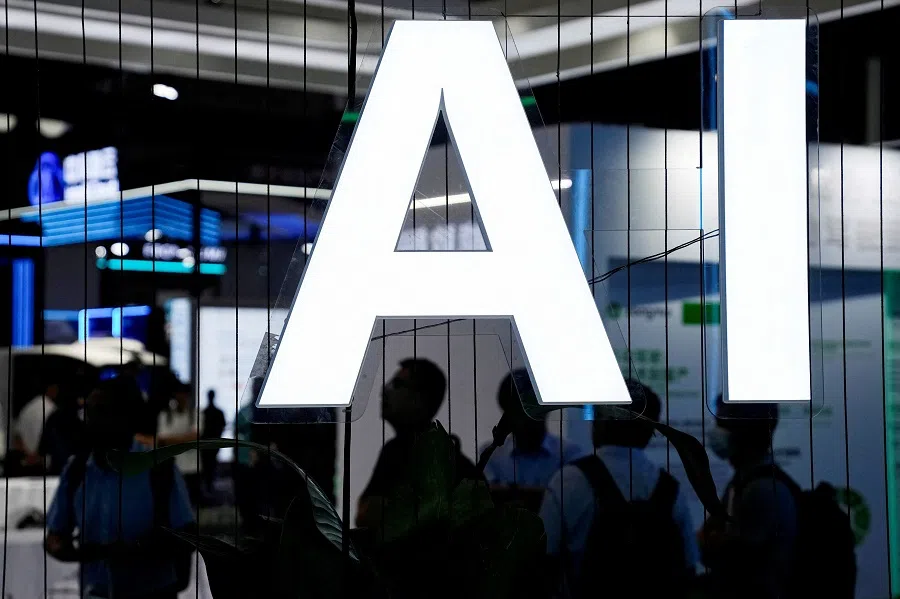
Yuan credited DeepSeek’s cutting-edge open-source approach, which matched the capabilities of America’s top AI models while introducing engineering innovations, such as improvements in training stability or so-called mixture of experts, also known as MoEs.
Despite OpenAI researchers downplaying DeepSeek’s achievement as merely replicating their models, the lack of OpenAI’s transparency makes such claims difficult to verify. AI expert Liu Zhiyuan noted that Chinese AI firms have historically trailed OpenAI by six months when releasing models of comparable performance. With OpenAI’s o1 launching last September and DeepSeek-R1 following just four months later, China’s AI industry is rapidly closing the gap. The widespread open-sourcing of R1 is expected to accelerate this trend, potentially enabling many Chinese AI firms to reach OpenAI’s level in the months ahead, Liu predicted.
DeepSeek’s efficiency is fuelling doubts about whether AI’s multi-trillion-dollar infrastructure buildout is sustainable.
AI computing investment in debate
DeepSeek’s efficiency is fuelling doubts about whether AI’s multi-trillion-dollar infrastructure buildout is sustainable.
Since ChatGPT’s launch, Nvidia’s market value has surged 10-fold, as the US tech industry ramped up AI spending to US$200 billion annually, with nearly half of it going toward Nvidia chips. DeepSeek’s success now raises fundamental questions: If state-of-the-art AI can be achieved with fewer GPUs, are Silicon Valley’s investments bloated?
Some executives are already reevaluating their spending. Meta has formed internal “war rooms” to study DeepSeek’s cost-efficiency, while Google and Microsoft have signaled a shift toward more measured AI infrastructure investments.
Yet, Big Tech is standing firm to reassure investors. Meta CEO Mark Zuckerberg argued that while model training may become more efficient, inference — running AI models at scale — will require vast computing power. Alphabet CEO Sundar Pichai and Microsoft’s Nadella echoed this view, asserting that while AI costs may shift, overall demand will keep growing.
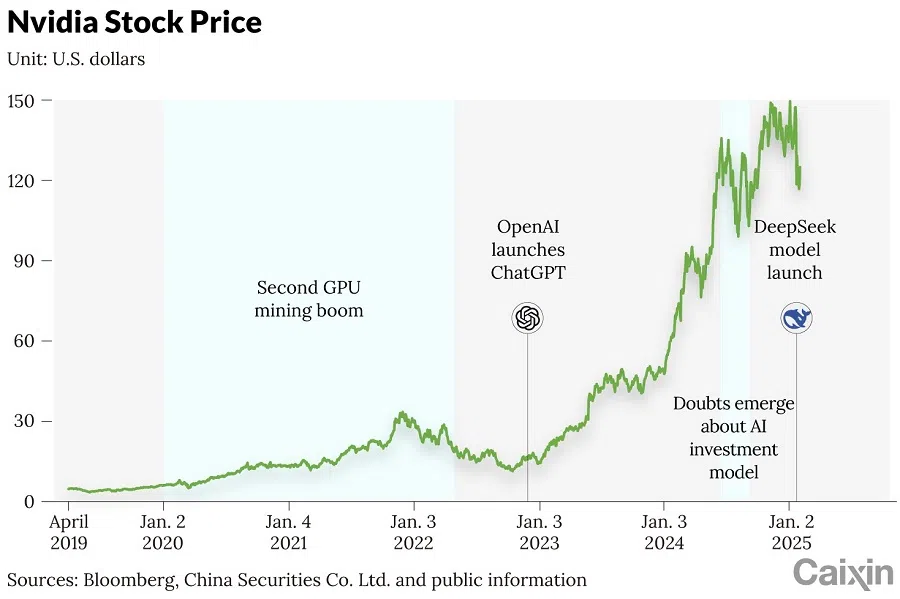
Despite growing scepticism, AI-related spending is still expected to grow this year. Microsoft projects capital expenditures will remain high, while Meta expects to spend US$60 billion to US$65 billion, up from US$39.2 billion in 2024. Google plans to raise spending from US$52.5 billion to US$75 billion this year.
Adding to the uncertainty, Microsoft — OpenAI’s largest backer — has opted not to make additional investments. Meanwhile, President Donald Trump announced the Stargate initiative, a US$100 billion AI infrastructure project led by SoftBank, Oracle and OpenAI, with plans to scale up to US$500 billion. Notably, Microsoft is absent from the list of major investors.
Scepticism over AI’s financial sustainability is growing. In 2023, Sequoia Capital’s partner David Cahn estimated that global Nvidia GPU purchases would need to generate at least US$200 billion in lifetime revenue to pay back the upfront capital investment. By mid-2024, he revised that number to US$600 billion.
Nobel-winning economist Daron Acemoglu estimated that generative AI would boost US productivity by just 0.5% over the next decade — far below Goldman Sachs’ prediction of 9%. He argues that AI still struggles with real-world applications, while its biggest potential impact areas, like scientific research, are not yet a commercial focus.
Jim Covello, Goldman Sachs’ head of global equity research, predicted that AI infrastructure spending could surpass US$1 trillion, exceeding early internet-era investments. But unlike prior innovations, like smartphone GPS, he warned that generative AI lacks a clear monetisation path.
As doubts mount, tech leaders are standing firm. On 23 July, Pichai defended Google’s aggressive AI spending, arguing that underinvestment poses a bigger risk than overspending. The same day, Zuckerberg was asked if AI investments were a “bubble”. He didn’t deny it but said history has shown that many bubbles eventually lead to valuable breakthroughs. Whether AI will follow that pattern remains an open question.
DeepSeek under attack
On 26 January, DeepSeek faced a coordinated cyberattack, shutting down its API and website for several days. Cybersecurity firm 360 attributed the attack to a highly organised, multi-phase distributed denial of service, or DDoS, campaign, possibly aimed at disrupting China’s AI momentum. A DDoS (Distributed Denial-of-Service) attack is a malicious attempt to disrupt the normal traffic of a targeted server, service or network by overwhelming it with a flood of internet traffic.
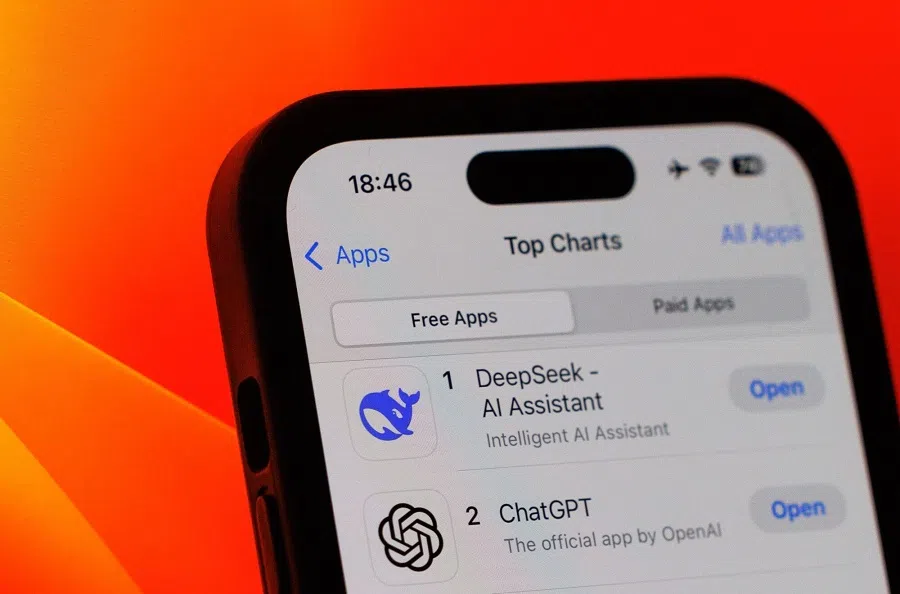
As DeepSeek struggled with attacks, allegations surfaced that it had misused OpenAI data and illegally sourced US AI chips. Meanwhile, the US Navy, NASA and the Texas state government banned DeepSeek’s applications. Senator Josh Hawley went further, calling for a total AI decoupling from China, including restrictions on open-source models — a move widely mocked online for contradicting the principles of a free internet.
Dario Amodei, CEO of Anthropic, a competitor of OpenAI, dismissed DeepSeek’s performance while lobbying for stricter US chip export controls.
His remarks triggered backlash in the AI community. Hugging Face co-founder Thomas Wolf debunked Amodei’s claims, arguing he was twisting the narrative to justify protectionism. “If both DeepSeek and Anthropic were closed-source, the arm-race interpretation could have made sense,” Wolf wrote on social media platform X. “But having one of the models freely widely available for download and with detailed scientific report renders whole ‘close-source arm-race competition’ argument artificial and unconvincing.”
DeepSeek’s rapid progress threatens the closed-source business model of companies like OpenAI and Anthropic, which rely on proprietary technology for dominance.
OpenAI has also been lobbying for tighter AI controls. On 13 January, it released a policy paper urging the US to restrict AI exports based on “democratic values”. In 2024, it had already significantly restricted API access for users in mainland China, raising concerns about the growing politicisation of AI access.
DeepSeek’s rapid progress threatens the closed-source business model of companies like OpenAI and Anthropic, which rely on proprietary technology for dominance. “OpenAI assumed it could stay ahead alone,” said AI expert Liu. “But AI thrives on open collaboration. Locking down technology is short-sighted.”
Some experts argue DeepSeek’s success proves China should lean further into open-source AI. “Open-source means the world is on your side,” said Yuan, “Playing geopolitical games is a losing strategy.”
Du Zhihang contributed to this report.
This article was first published by Caixin Global as “Cover Story: How DeepSeek Is Redefining the Future of AI”. Caixin Global is one of the most respected sources for macroeconomic, financial and business news and information about China.





![[Big read] China’s 10 trillion RMB debt clean-up falls short](https://cassette.sphdigital.com.sg/image/thinkchina/d08cfc72b13782693c25f2fcbf886fa7673723efca260881e7086211b082e66c)